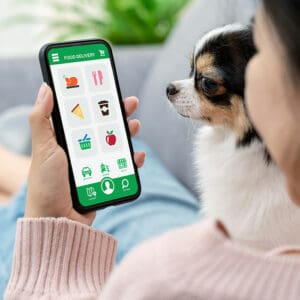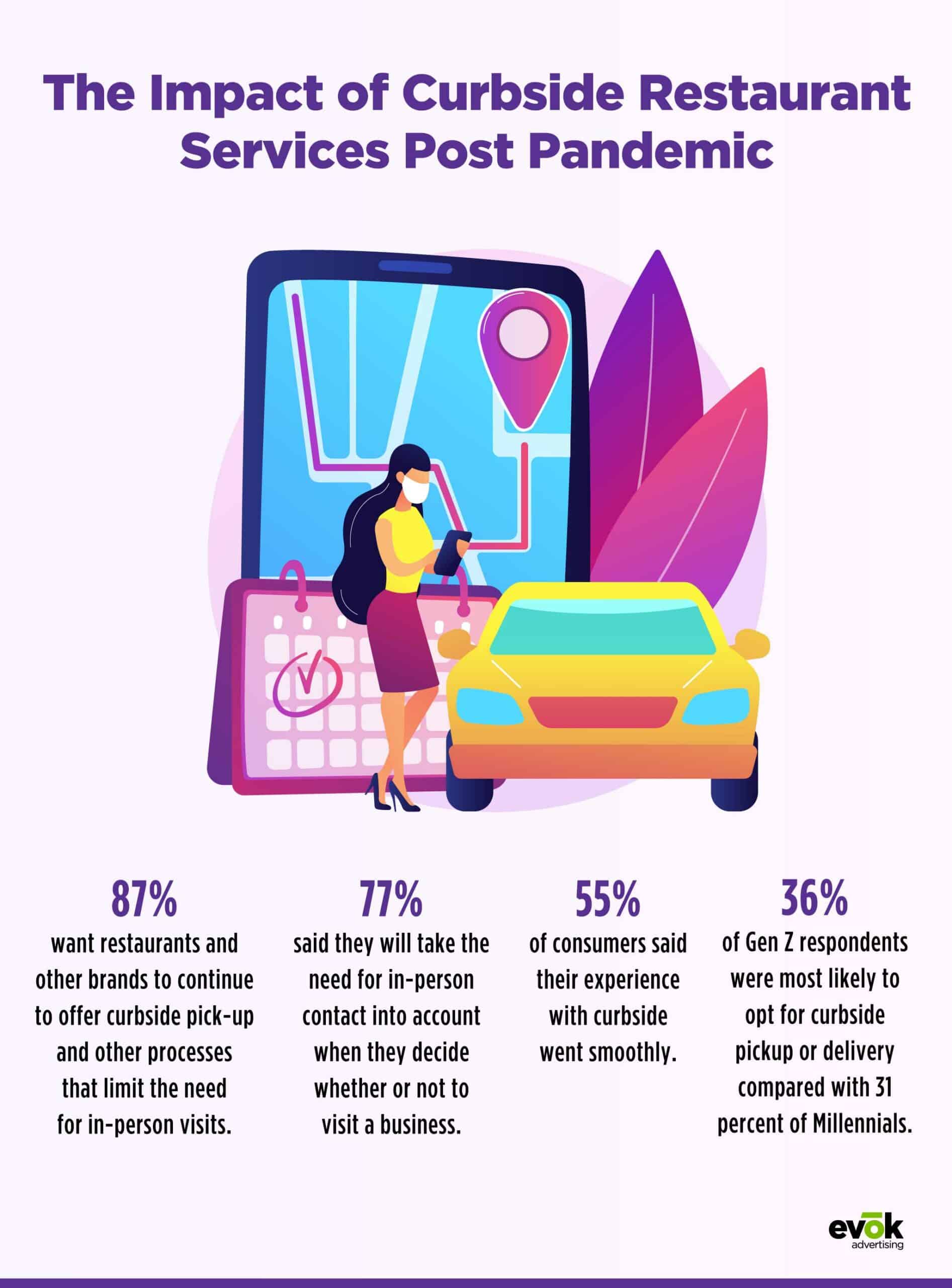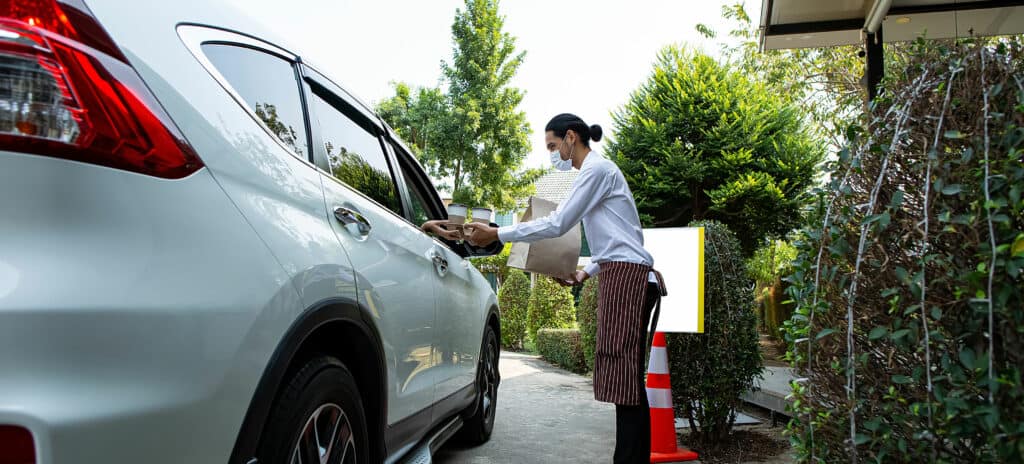
Restaurant Technology Evolutions After COVID-19: A Curbside Pickup Revolution
Sixty-five million years ago, an asteroid impacted the Gulf of Mexico and wiped out most of the dinosaurs. The remainder slowly evolved into what we now know of as birds in order to survive. Since early 2020, restaurants large and small have been fighting for survival against the asteroid that’s shaken their industry: COVID-19.

At the start of the pandemic, restaurants raced to keep up with the necessary technological advancements to meet customer and government requirements for contactless payment, pickup, and delivery. Some went beyond catching up and began to pioneer new ways to reach their consumers (from a distance) out of necessity. Today, we’re going to be looking at the adaptations for survival that have allowed some restaurant owners to go beyond and actually prosper during the COVID-19 pandemic.
How Delivery Services Evolved Three Years in One
Picture this: You own a successful family restaurant in your local town. In fact, people come from several towns over because your food is just that good. Business is booming, but your restaurant is almost always at capacity when you’re open, so your bottom line can’t get much higher without expanding into delivery and curbside, or opening up a whole new location. It’s fine though, you’ll take your time and research everything you need before you take such a drastic step. 2019 has been a great year for you, and you’re looking forward to what 2020 has in store.
Now fast forward three months into March and if you’re a restaurant owner you suddenly don’t have the luxury of waiting anymore. There are people out there that want your food, but they can’t come to you. The only option is to get your food to them. Even the people that came from towns over. But how? Enter the ghost kitchen. Prior to the pandemic, roughly 15% of restaurant operators used ghost kitchens. By May of 2020, that number had soared to over 50%. Ghost kitchens serve double roles as distribution centers and kitchens for restaurants that rent space in them. They solely offer delivery services and allow restaurants that have physical locations far from consumers that want their food to reach them much easier. Ghost kitchens also partner with Grubhub and Ubereats as well as other third-party delivery services to ensure your food is accessible to the widest number of people possible.
Before the need for contactless payment and contactless delivery, restaurants designed the customer experience based on the assumption that most would be dining-in. The pandemic has forced them to throw that assumption away entirely and sped up a transition that would have taken years into one, resulting in restaurant owners and operators giving delivery and mobile orders equal importance to dine-in. With ghost kitchens, restaurants can reach more consumers, further away than ever before.
The Development of Curbside Pickup

Curbside pickup is nothing new and was offered by a large number of major businesses before the pandemic, such as Chick-fil-A, McDonald’s, and Burger King. However, when the pandemic began restaurants that previously only had three or four parking spots for curbside pickup were forced to turn their entire parking lots into potential curbside pickup spots. This was a problem, as before when a customer entered their car’s description it was simple to distinguish “grey Toyota” between four spots. Any idea how many grey Toyotas there could be in a whole parking lot at once? Many had to rush and update their apps to allow for customers to put in more detail, but the system was still imperfect.
Some restaurants like Texas Roadhouse put up tents outside locations. When you received a message saying your food was ready, you’d go up to the tent and speak to a staff member, who would have your food brought out once it was confirmed you were there, which neatly sidestepped the issue with finding the correct car to bring the food to.
The clever restaurant owners and operators saw the upsurge in mobile orders and curbside as a chance to launch their own mobile apps if they hadn’t had them before or make changes to their rewards system and loyalty program if they did. Many enticed late adopters of mobile orders to take the plunge by offering them a free menu item after their first download of the app. And then by offering deals such as a free drink, you can entice a customer to come back, and more often than not they’ll buy something with that free drink.
How to Open a New Restaurant without Opening a New Restaurant
If you’ve ever thought about branching out as far as what your restaurant offers, but what you want to make doesn’t fit with your restaurant’s other menu items, then a virtual restaurant might be a good idea for you. Virtual restaurants are restaurants with no physical location and are present only on apps like Grubhub and DoorDash.
Naturally, to make the food you still need a kitchen of some sort, so virtual restaurants are operated by already existing restaurants that have decided to branch out, or opened up in the previously mentioned ghost kitchens. Restaurants can establish virtual-only menus for reasons like expanding their market to reach new customers, to test out new menu items before adding them to the restaurant menu, or test the market and see how receptive it is to a restaurant concept.
The thing that made virtual restaurants skyrocket in prevalence during the pandemic is that you can sell to multiple markets without having to open a new location, and most virtual restaurants require few things to run that a restaurant doesn’t already have. For example, if your restaurant already owns a grill, you might sell Italian food in your brick-and-mortar location, but start selling burgers in your virtual restaurants to reach a different market group.
One company that used virtual restaurants to boost their earnings during the pandemic was the Chuck E. Cheese company. They started a virtual restaurant called Pasqually’s Pizza and Wings that sold pizzas with a more robust sauce and cheese blend than the pizza they sell to children in their brick-and-mortar locations. It’s provided a large boost to their income, totaling over 10% of all CEC sales.
Marketing Dining Experiences in an Online Ordering World
What does brand loyalty look like in 2021, particularly when it comes to restaurants and dining experiences? That loyalty kept so many eateries in business during the roughest months of 2020 and today’s consumers continue to expect restaurants to evolve to meet their needs. From personalized marketing inclusive of tailored offers based on their preferences and behavior to hybrid dining experiences combining the convenience of digital ordering with the experience of in-store dining, the time for restaurants to step up is (still) now.